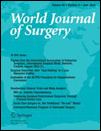A Qualitative Study Assessing the Barriers to Implementation of Enhanced Recovery After Surgery
Abstract
Background
Previous studies have quantitatively assessed Enhanced Recovery After Surgery (ERAS) guideline implementation and compliance, and identified the existence of compliance issues with the programs. This is the first study to qualitatively assess the reasons behind compliance issues in ERAS programs. The aim of this study was to elicit barriers to implementation and functioning of the ERAS program at Royal Prince Alfred Hospital.
Methods
A series of interviews were carried out with key stakeholders in order to explore barriers preventing effective functioning of the program 1 year after implementation. Interview transcripts were analysed. Data analysis involved a grounded theory methodology.
Results
Analysis of the data identified four key themed areas of practice that presented barriers: patient-related factors, staff-related factors, practice-related issues, and resources. These overarching themes were generated from subcategories that were linked to generate theory.
Conclusions
For the ERAS program to be implemented successfully with high levels of element compliance, the four key areas need to be addressed. As barriers to ongoing effective care become apparent, these should be managed in order to optimize the synergistic effects of this multimodal program of patient care.




